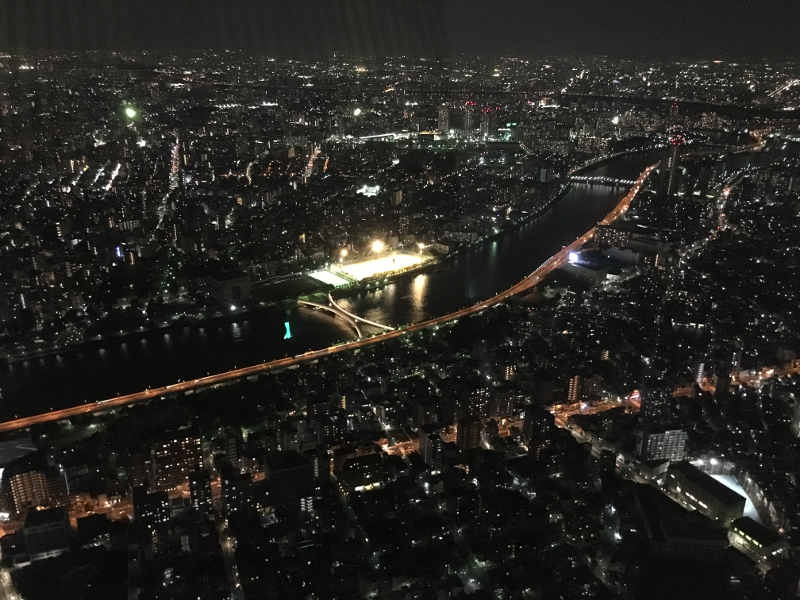Hi! I’m YUKORIN. I’m a wheelchair user. Accessible members and I enjoyed a Hato bus tour arranged at night on June 10, 2017.
Hato Bus
Hato buses are tour buses taking you around some sightseeing spots mainly in Tokyo or Yokohama. They offer half-day tours, one-day tours and tours for foreign visitors. You can enjoy traveling around various sightseeing places with a bus tour guide. The tour itinerary we chose was that we visited the Tokyo Skytree at night, admiring Tokyo night views from the bus. All the seats of a Hato bus are generally located on the upper deck. However, a new type of bus has recently been introduced which wheelchair users can board on the lower deck. I tried the bus tour by taking the new type of bus.
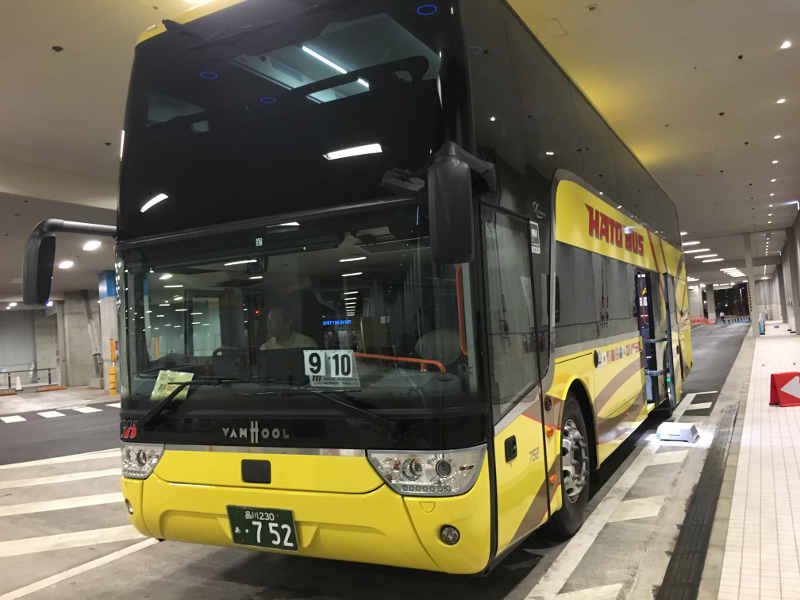
A Hato bus
I met our members at the Marunouchi South Ticket Gate of Tokyo Station when one of us found the Accessible Waiting Area.

Accessible Waiting Area
We entered the Accessible Waiting Area and found it a restful waiting room with a multipurpose restroom.

The inside of the Accessible Waiting Area
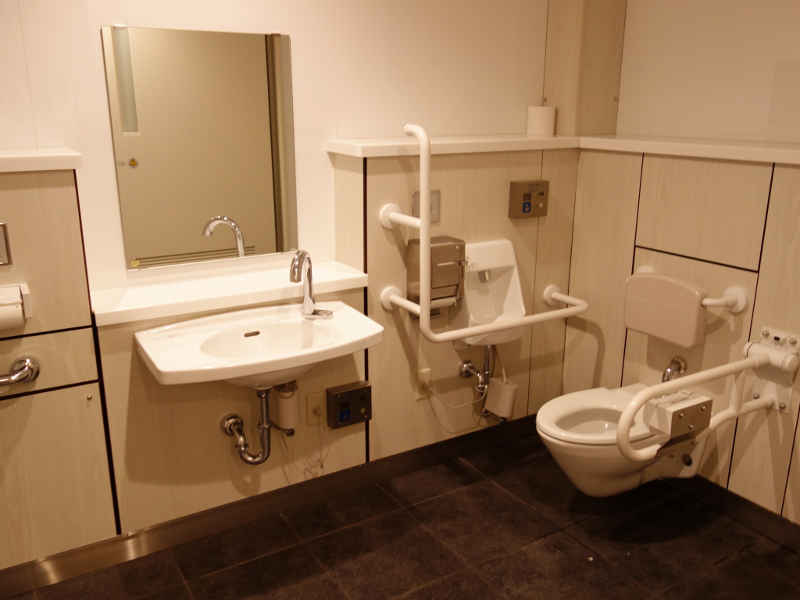
The multipurpose restroom located with the waiting area
We set off after all of us gathered together. There is a ramp at the Marunouchi South Exit.

The ramp at the Marunouchi South Exit
The Tokyo Hato Bus ticket office is within an easy walk from the Marunouchi South Exit. You can reach the office soon after passing the Tokyo Central Post Office called the JP Tower. I found its waiting room towards the left.
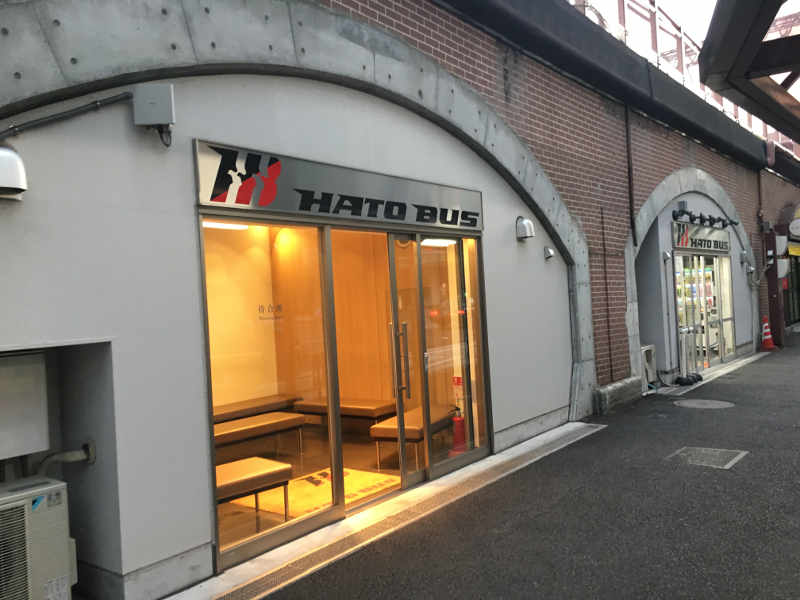
The waiting rooms for Hato bus tours
You can make an advance reservation for a Hato bus tour by phone or on line. How you pay the tour fare varies depending on the itinerary. You would be required to pay in cash on your departure day or to make advance remittances or an advance online payment with a credit card. We paid our tour fare at the Hato bus office that day. When people with disabilities show their disability certificate to a staffer at the office on their departure day, they and an attendance per person with a disability will get a discount off the bus fare. Making an advance reservation by phone is necessary in case you need such services for people with disabilities.
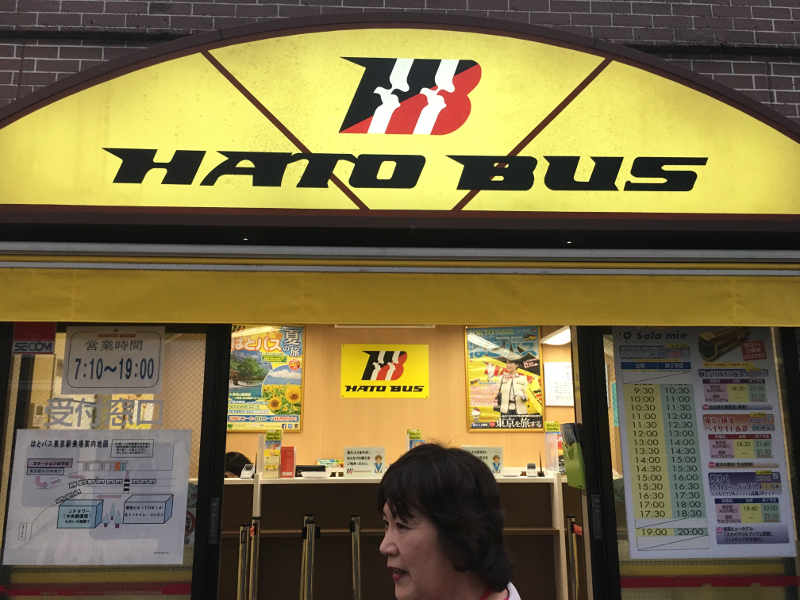
The Tokyo Hato Bus Office
This is the new type of Hato bus named Astromega which wheelchair users can board. Cool!
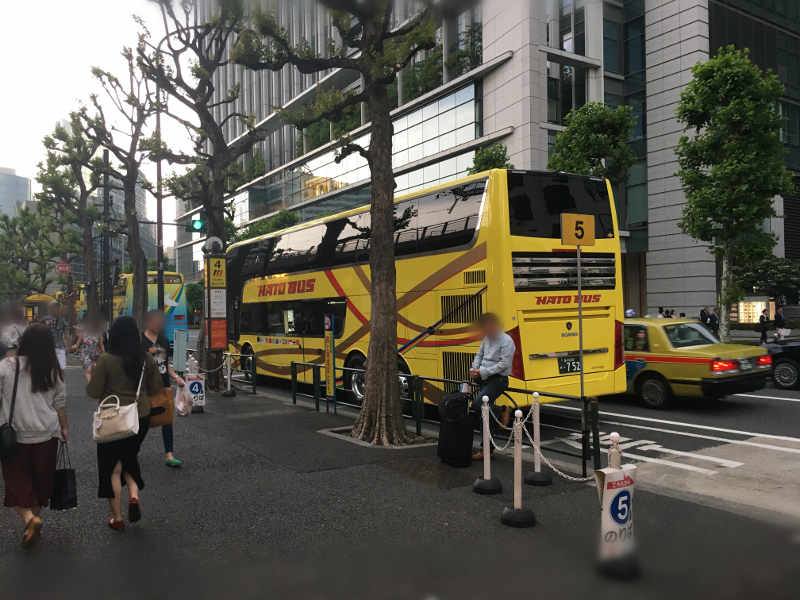
Astromega
A staffer put a board between the bus entrance and the street. I am getting on!

The board was placed.

I am boarding the bus.
Wheelchair users can be on the bus while being seated in their wheelchair. There are rails for any sized wheelchair to be fixed on the floor.

The rails with a gripping device
The front and rear wheels were safely connected to the floor with the gripping device. Great equipment for safety!
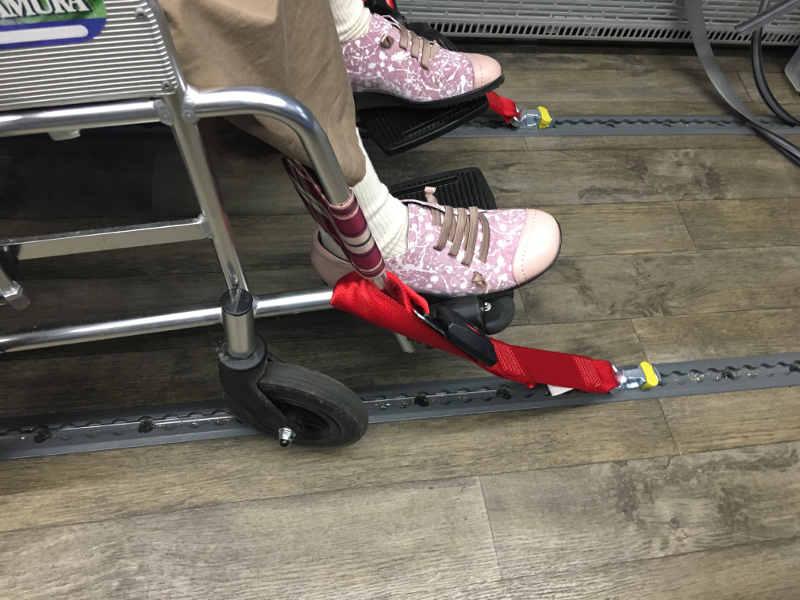
The front wheels fixed on the floor


The rear wheels fixed on the floor
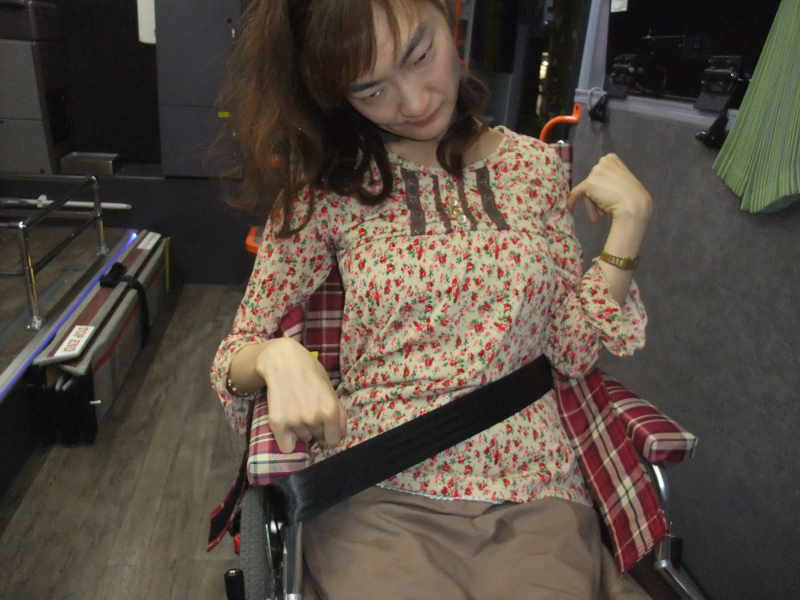
I sometimes get on a local bus with my wheelchair fixed on the floor. But my wheelchair moves when the driver hits the brakes. On the other hand, I had a sense of stability because I was in the larger bus with my wheelchair stably fixed on the floor.

The wheelchair space in the bus
| We took the following photos in the running bus. Please be aware that they show Tokyo landmarks as the camera shakes together with the reflections of the blue and green fluorescent lights in the bus. |
The first landmark we saw from the bus windows was the Rainbow Bridge, which connects Tokyo Bay with the Tokyo Waterfront Secondary City Center. The bridge is famous for its beautiful illumination at night.
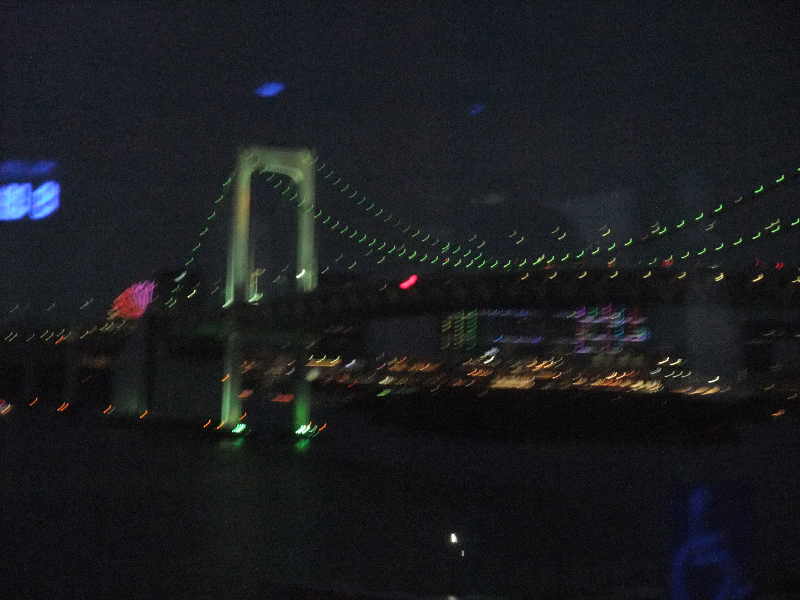
The Rainbow Bridge
The Ferris wheel at Daiba. Wonderful illumination! The Tokyo Waterfront Secondary City Center written above is called Daiba, which is a popular area where many commercial and leisure facilities are located.

The Ferris wheel at Daiba
The lit up Tokyo Tower was also beautiful. Tokyo Tower is a symbol of Tokyo. Its observation decks are recognized as a well-known sightseeing spot for a long time.
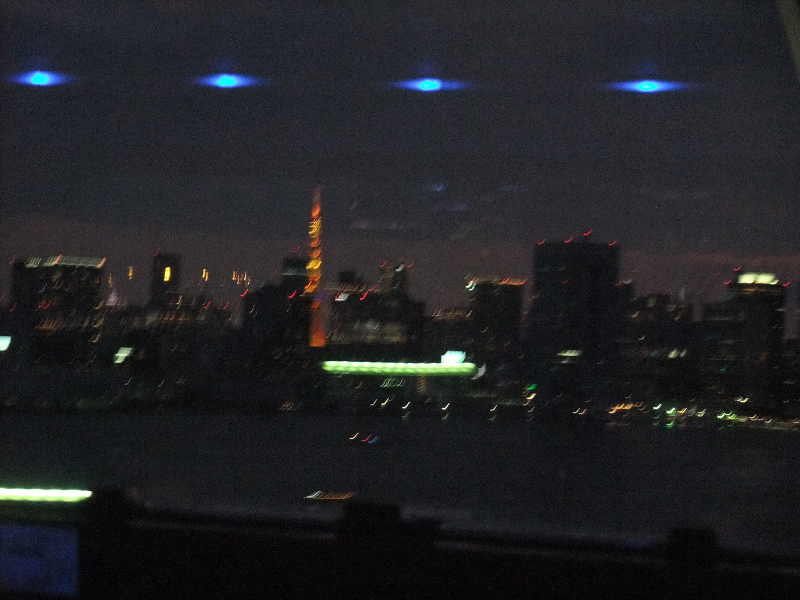
Tokyo Tower
The Tokyo Skytree
We arrived at the Tokyo Skytree. The tower was illuminated in the blue light with the motif of the water of Sumida River. The illumination is called “Iki,” the essence of “Kokoroiki,” which represents the straightforward spirit of Edo commoners. The Tokyo Skytree is 634 meters high and is recognized as the tallest broadcasting tower in the world. The main role of the tower is transmission of digital terrestrial broadcasting. The observation decks to enjoy panoramic views of Tokyo city are a very popular sightseeing spot that attracts many visitors from domestic and overseas.
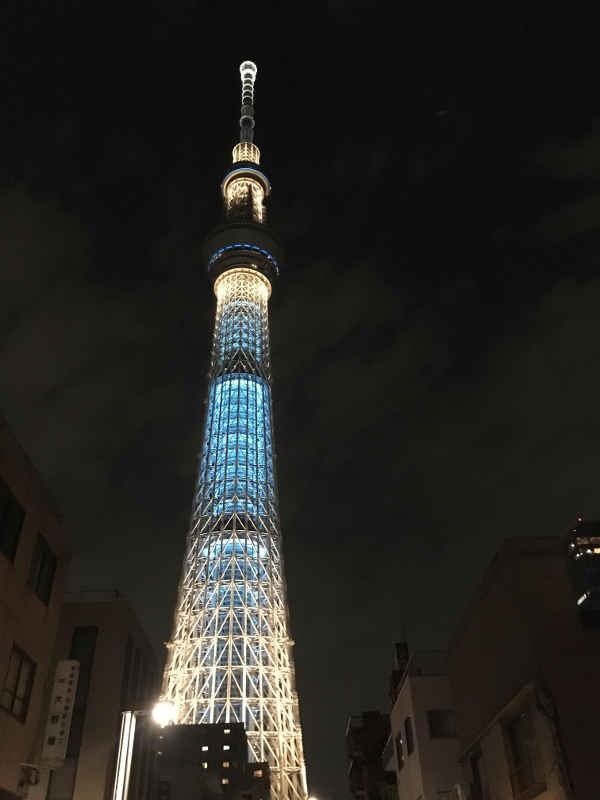
The Tokyo Skytree
The pedestrian walkway is provided for safety at the group bus parking on the 1st floor. We saw the Group Entrance over there.
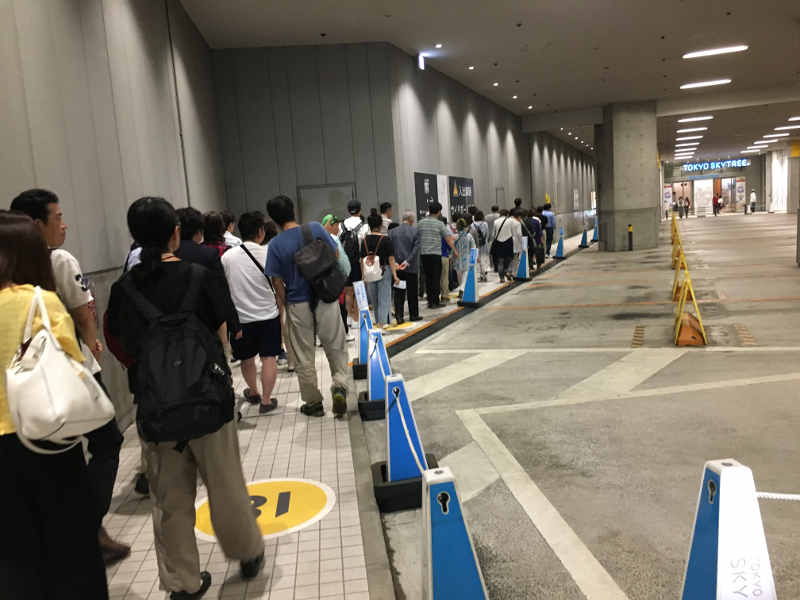
The group bus parking

The Group Entrance
The admission fee was included in our bus tour fare as group visitors. When you go up to the observation decks as an individual visitor, a person who is 18 years old or older is admitted to the TEMBO DECK (Observation deck on Floor 350) for ¥2,060. Presenting their disability certificate to a staffer at the ticket counter, a visitor with a disability who is 18 years old or older is admitted to the TEMBO DECK for ¥1,030. The same discounted fee also applies to one attendant per visitor with a disability. In case you would like to go up to the TEMBO GALLERIA (Observation galleria on Floor 450), a visitor who is 18 years old or older has to pay another admission fee of ¥1,030. In that case, a visitor with a disability and their attendant have to pay ¥510 separately by showing their disability certificate to a staffer.

A TEMBO DECK ticket
Luggage checks are conducted at the Departure Gate on the 4th floor. Wheelchair users can have the security check without standing in a line.

The luggage check
We were going to go up to the TEMBO DECK by taking the big elevator whose upper part of the wall is decorated gorgeously. I got excited!
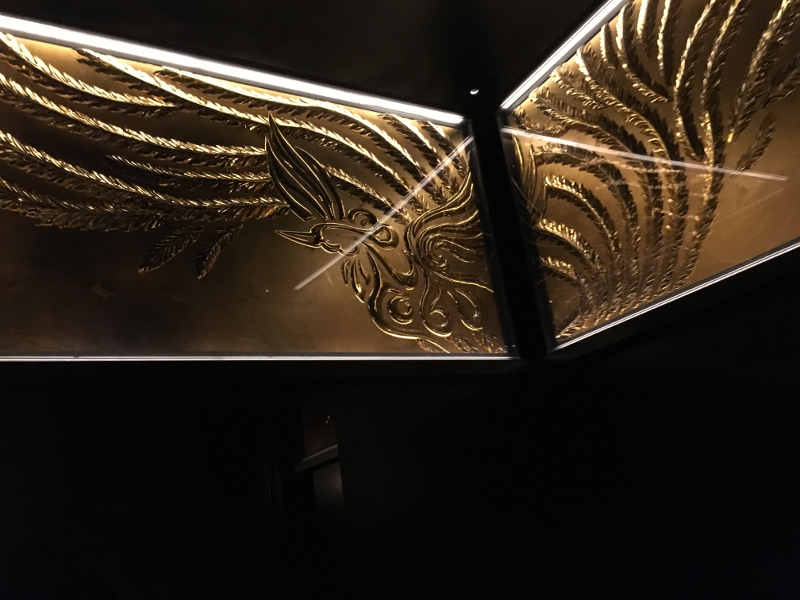
The elevator to the TEMBO DECK
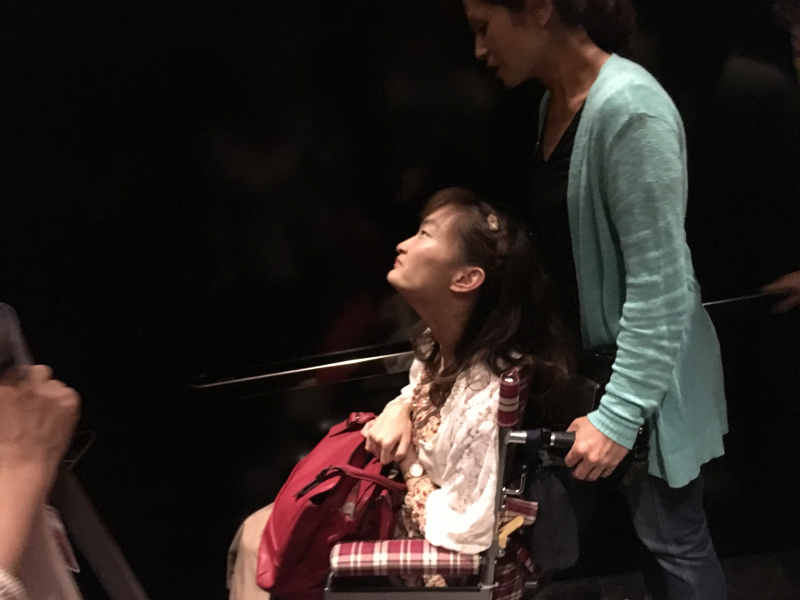
The inside of the elevator
We’ve got to the TEMBO DECK. The place was crowded as that day was Saturday. But I was able to watch the night views because visitors were kind enough to step aside for me when I said “Excuse me.”
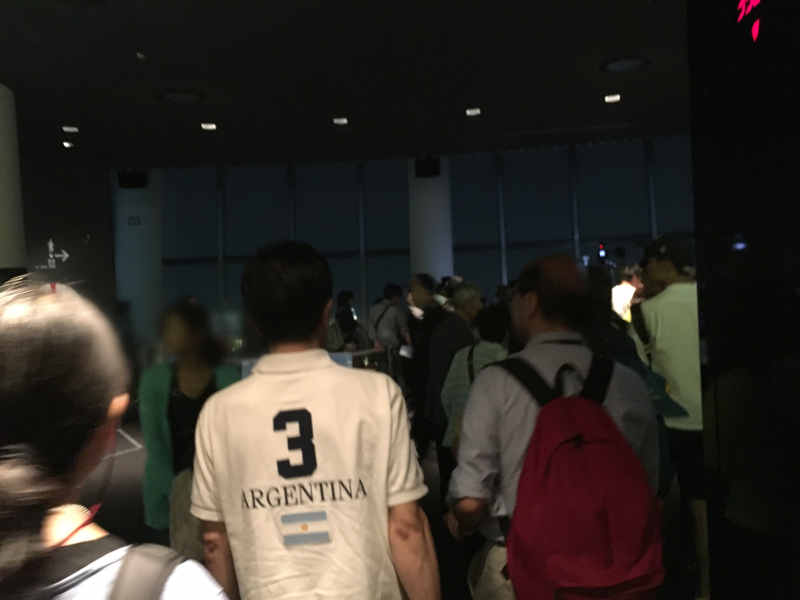
A crowd in the TEMBO DECK
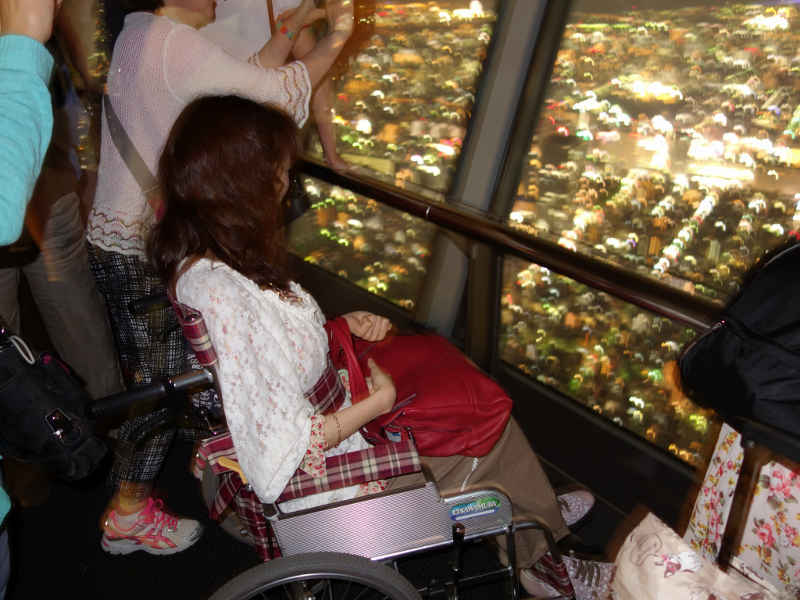
I admired the night view.
How splendid the night view of Tokyo is! I couldn’t believe I looked down the real city of Tokyo. It looked as if beautiful jewels were strewn around there.
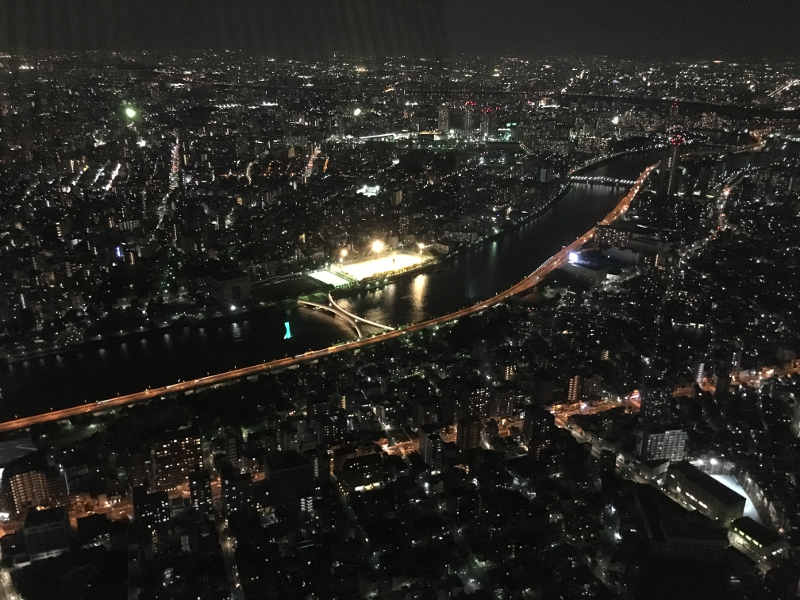
A night view of Tokyo
There are multipurpose restrooms on each floor except for Floor 445 at the TEMBO GALLERIA. I used two of them and found them satisfactory as wheelchair accessible restrooms. The models of bidet functions and placement of other equipment slightly vary depending on the restroom.
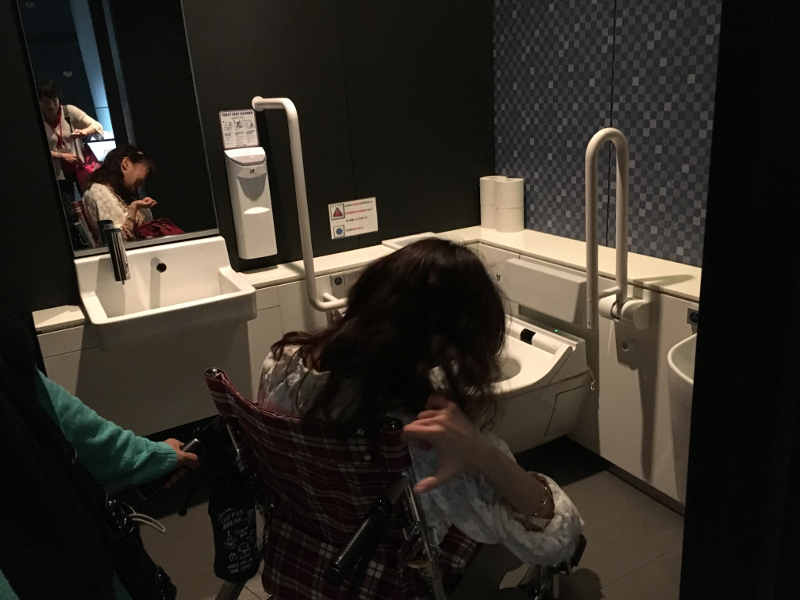
One of the multipurpose restrooms
The TEMBO DECK consists of a triple structure divided into Floor 350, Floor 345 and Floor 340. There is an elevator for wheelchair users and strollers which stops at these three floors. This elevator is located differently from the elevators for general visitors. It is very helpful to wheelchair users and strollers.
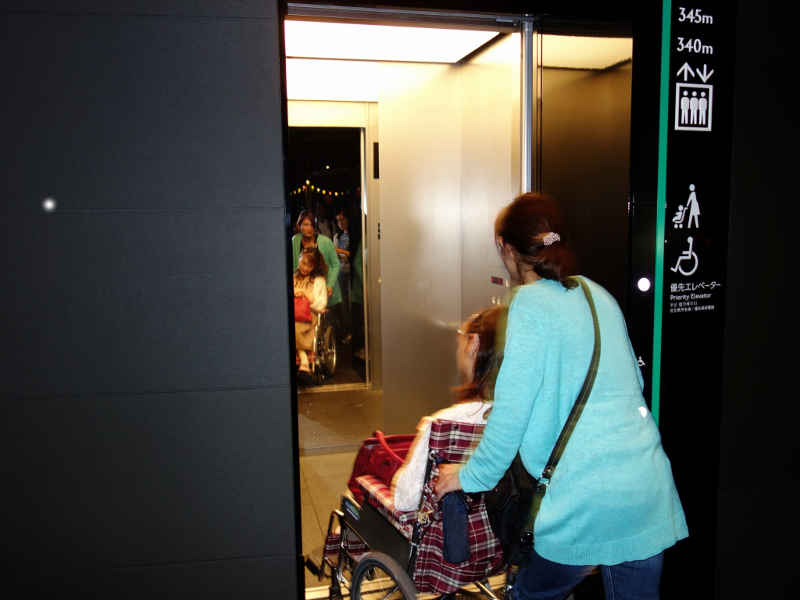
The elevator for wheelchair users
There are touch-panel guide monitors. You can touch and enlarge images of Tokyo landmarks on the monitors. However, wheelchair users might not be able to touch the upper part of the monitors. The image of Tokyo Tower was out of my reach.
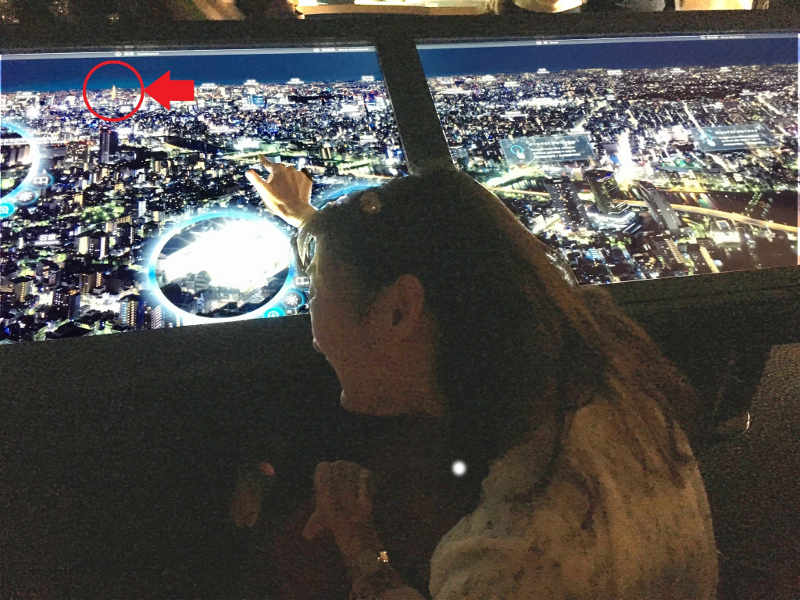
I couldn’t tap Tokyo Tower.
The Glass Floor is one of the highlights. Wheelchair users have no problem in looking down through the floors. Although I was a bit scared, I dared to enjoy the chance to look down from heights.
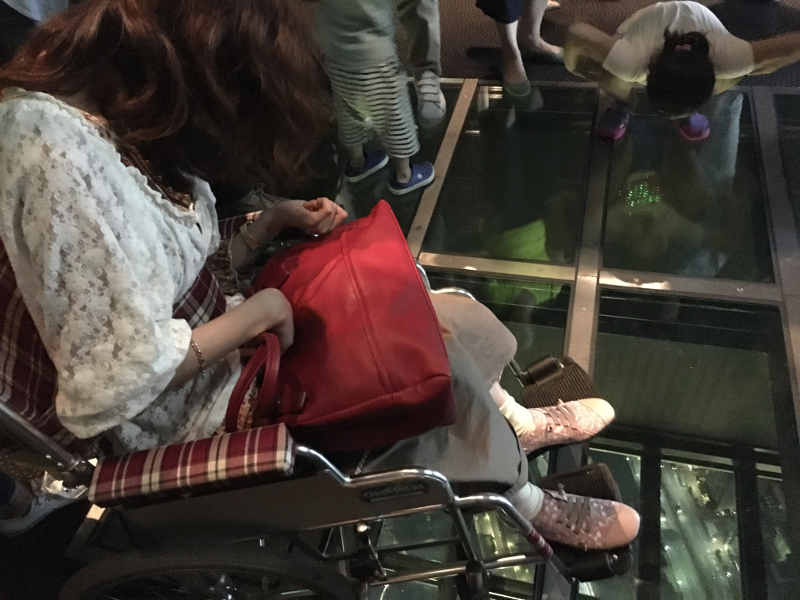
The Glass Floor
We finished strolling around the TEMBO DECK. The Exit Lobby on the Floor 340 was very crowded when we were going to take the elevator down to the 5th floor. However, a staffer ushered our members into the elevator because I’m a wheelchair user.
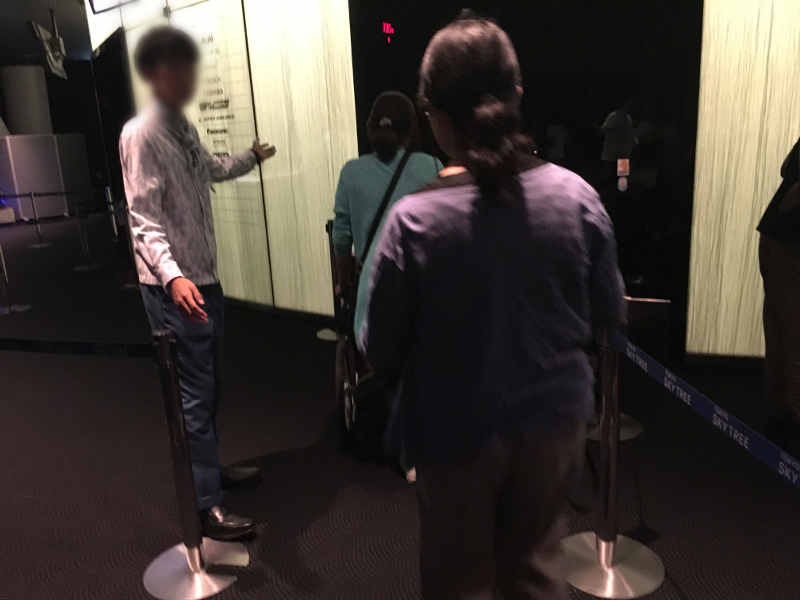
The elevator at the Exit Lobby
I popped in THE SKYTREE SHOP on the 5th floor. The shop is spacious. Wheelchair users can walk around for shopping if it is not crowded.
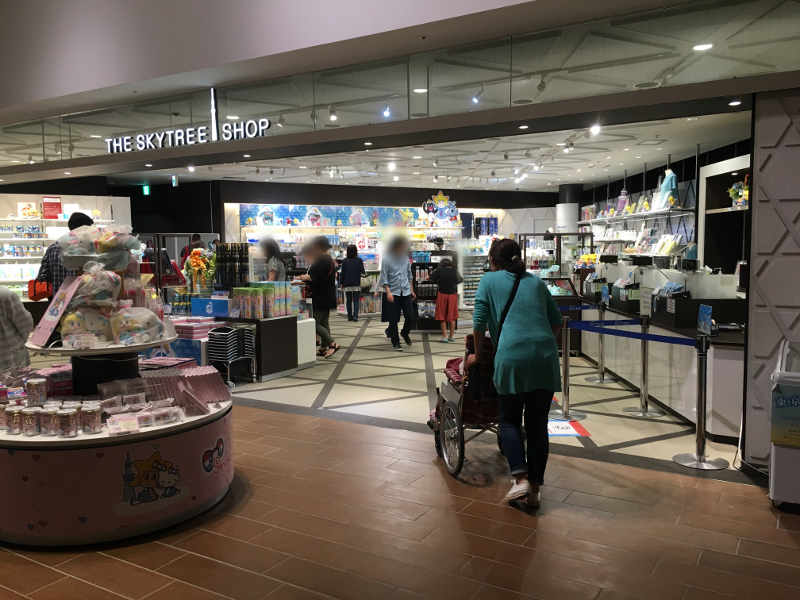
THE SKYTREE SHOP
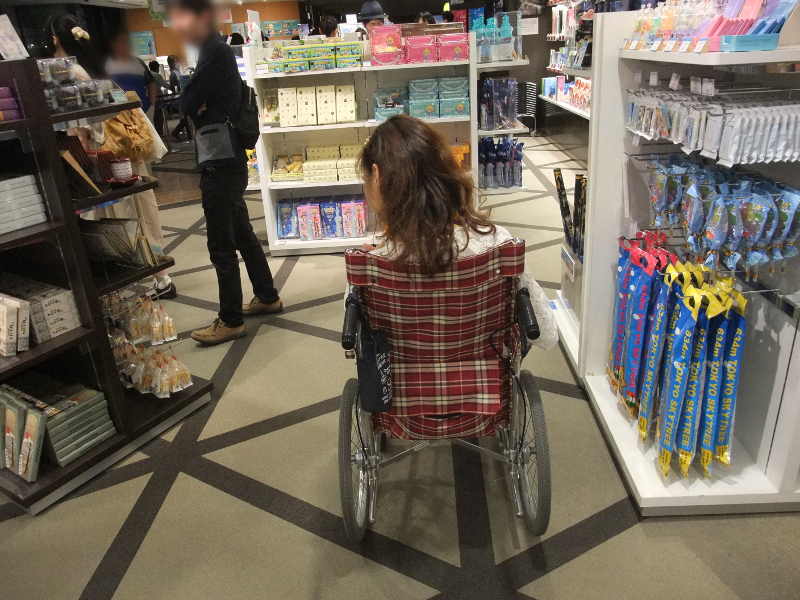
The shopping space
This is the Group Lobby we walked through on the way to the observation decks and on the way back to the group bus parking. This place is expansive. The Sumida River Digital Picture Scroll on the wall is worth watching too.

The Group Lobby
We got on the bus again. We took the photo below when the bus passed the Kabukiza Theater in Ginza on our way back to Tokyo Station. Kabuki is one of classical Japanese dance-dramas, which is performed by male actors wearing kimonos and makeup. Kabuki dance-dramas are beautiful and worth watching. While I saw the theater from the bus window, I thought I would like to watch Kabuki there someday. The bus passed by Ginza city and returned to the Tokyo Hato Bus Office. Our tour was wrapped up with those nice night views of Tokyo.
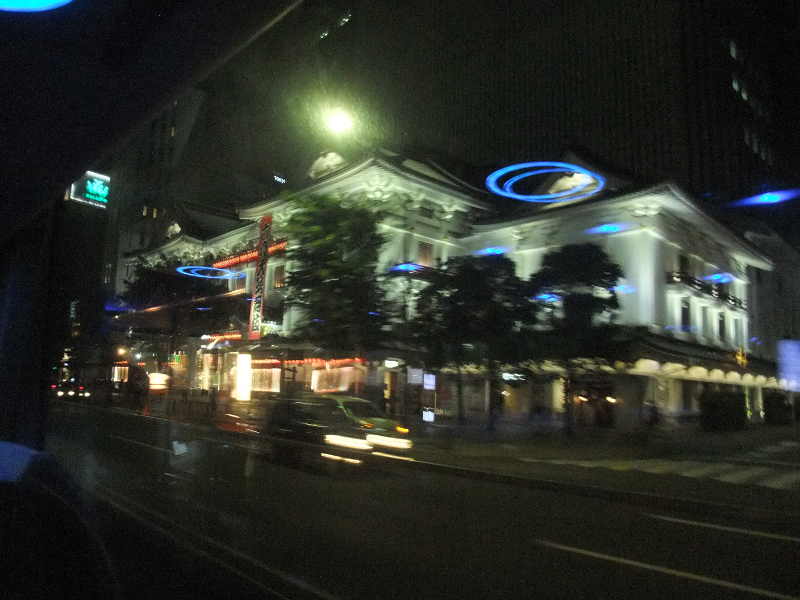
The Kabukiza Theater

A commemorative photo against a backdrop of the night view
People generally enjoy their Hato bus tours on the 2nd floor of the buses. However, I was also able to join the bus tour as the new type of bus has been introduced which wheelchair users can board on the 1st floor. Hato bus tours are perfect for Tokyo sightseeing because each of the buses takes you around some tourist spots in an efficient way. I would like more wheelchair users to enjoy Hato bus tours. By the way, I had once been to the Tokyo Skytree in the daytime when I thought that the night views must be more beautiful than I could imagine. I have been dreaming of going there at night since then. Thanks to Accessible members, the chance came to me that night. The wonderful experience made me believe that dreams will come true if you keep on dreaming.
